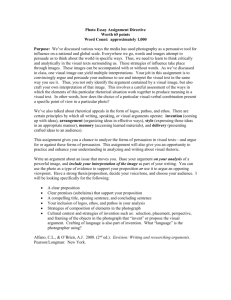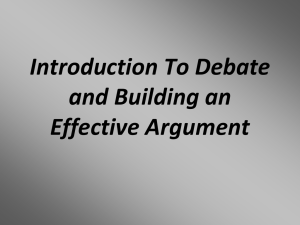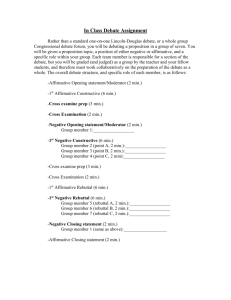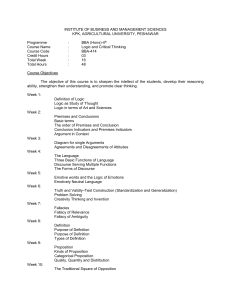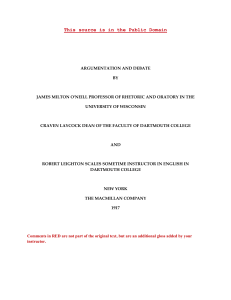Debate Points
advertisement
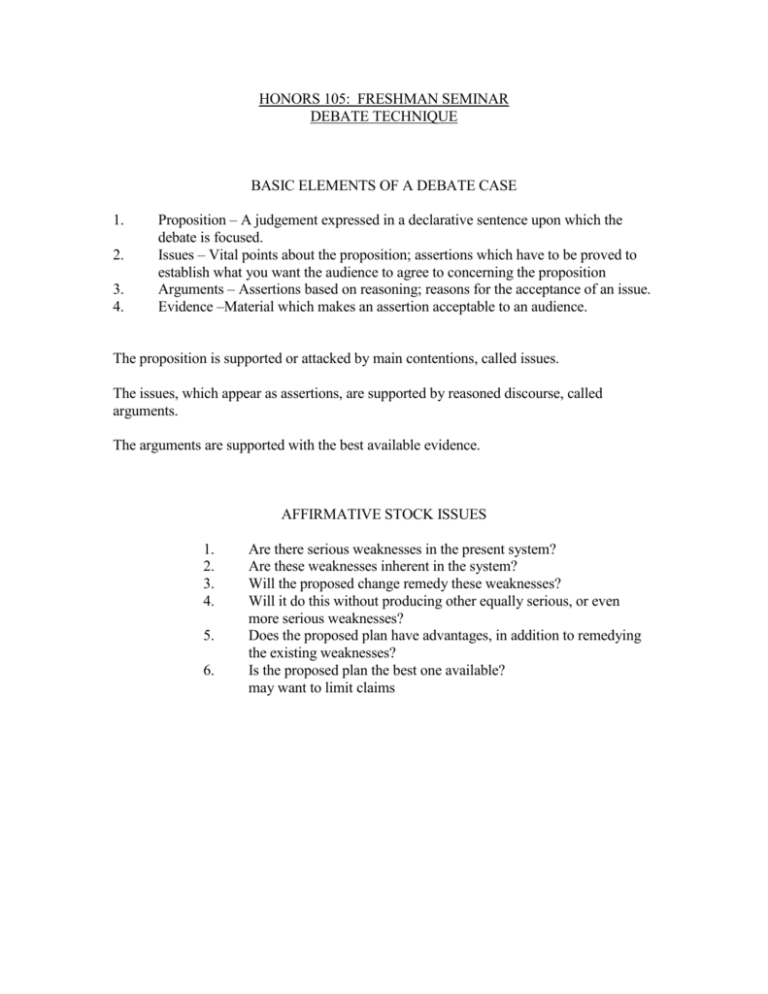
HONORS 105: FRESHMAN SEMINAR DEBATE TECHNIQUE BASIC ELEMENTS OF A DEBATE CASE 1. 2. 3. 4. Proposition – A judgement expressed in a declarative sentence upon which the debate is focused. Issues – Vital points about the proposition; assertions which have to be proved to establish what you want the audience to agree to concerning the proposition Arguments – Assertions based on reasoning; reasons for the acceptance of an issue. Evidence –Material which makes an assertion acceptable to an audience. The proposition is supported or attacked by main contentions, called issues. The issues, which appear as assertions, are supported by reasoned discourse, called arguments. The arguments are supported with the best available evidence. AFFIRMATIVE STOCK ISSUES 1. 2. 3. 4. 5. 6. Are there serious weaknesses in the present system? Are these weaknesses inherent in the system? Will the proposed change remedy these weaknesses? Will it do this without producing other equally serious, or even more serious weaknesses? Does the proposed plan have advantages, in addition to remedying the existing weaknesses? Is the proposed plan the best one available? may want to limit claims 2 POSSIBLE NEGATIVE POSITIONS 1. Stand for the status quo by presenting its merits or attacking the need for change. 2. Concede weaknesses in the status quo but argue that they are not inherent in the existing system and can be remedied without changing the system itself. 3. Concede the existence of a serious problem, but argue that the affirmative is advocating the wrong solution. 4. Combine second and third positions. COMMON METHODS OF REFUTATION 1. Show a conclusion is based on insufficient evidence or evidence drawn from unreliable sources. 2. Concede accuracy of evidence but argue that the opposition has drawn the wrong conclusion from it. 3. Show weight of evidence favors your side. (May or may not attack specific pieces of opposing evidence.) 4. Argue opposing argument based on faulty analysis of question. 5. Show opponents have used faulty reasoning. 6. Expose inconsistencies in case or evidence. 7. Show how part of opponents’ arguments or pieces of their evidence supports your case 3 HYPOTHETICAL AFFIRMATIVE OUTLINE First Affirmative Speech Introduction I. Show how proposition is important/interesting to the listener. II. Give background information. III. Define important terms of argument. IV. State main contentions. Body I. Present and support first main point II. Present and support second main point... Conclusion I. Summarize argument. II. Show progress you have made in proving case. 4 HYPOTHETICAL NEGATIVE OUTLINE First Negative Speech Introduction I. Accept/reject the analysis/definitions used by the previous speaker. II. Refute point made by previous speaker. III. State what, in your opinion the affirmative must prove to establish their case. III. State position of your team on the question. IV. Give main propositions in your case Body I. Present and support first proposition of your case. II. Present and support second proposition... Conclusion I. Summarize your argument II. You can see that I have shown .... (Develop progress you have made toward defeating proposition)
